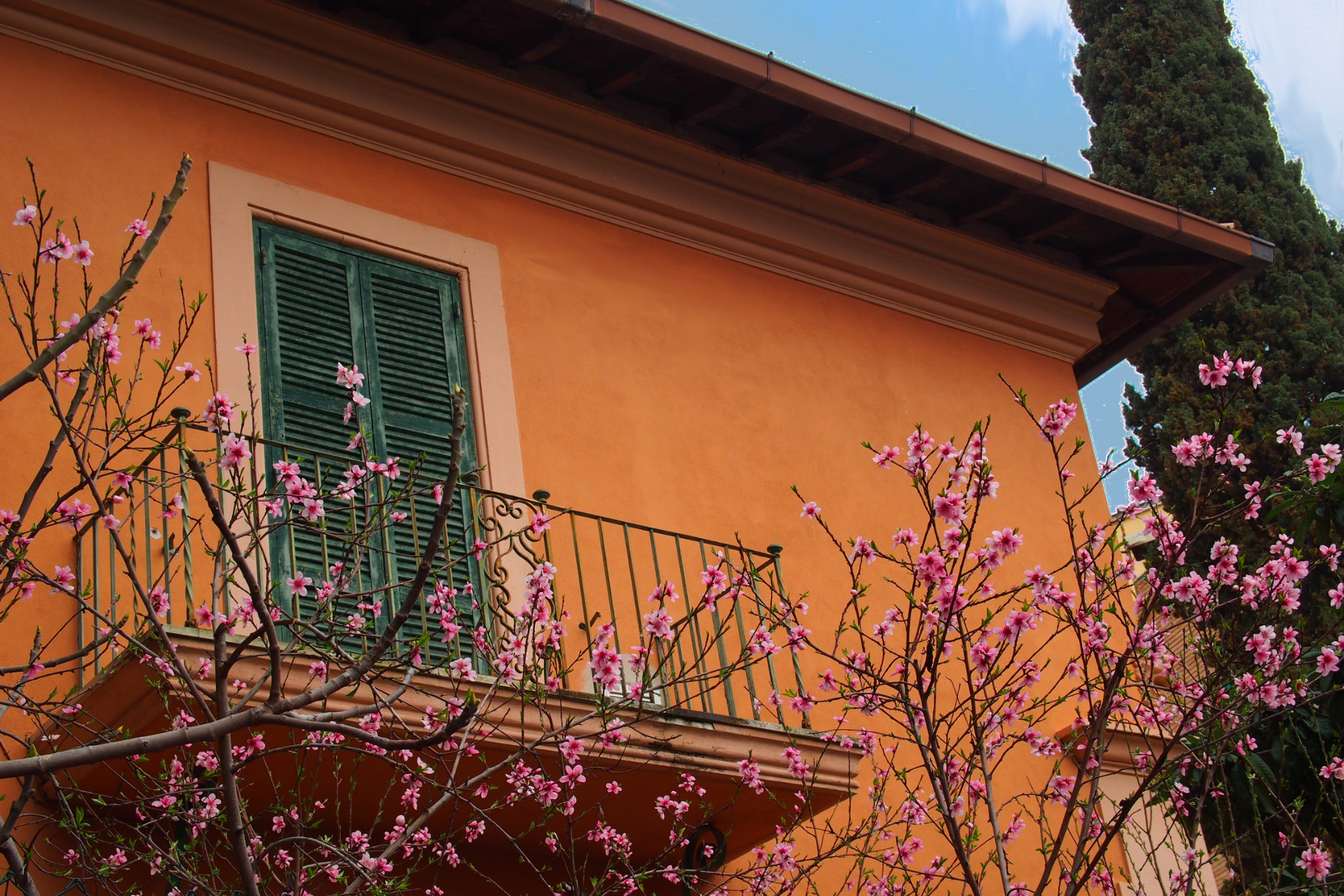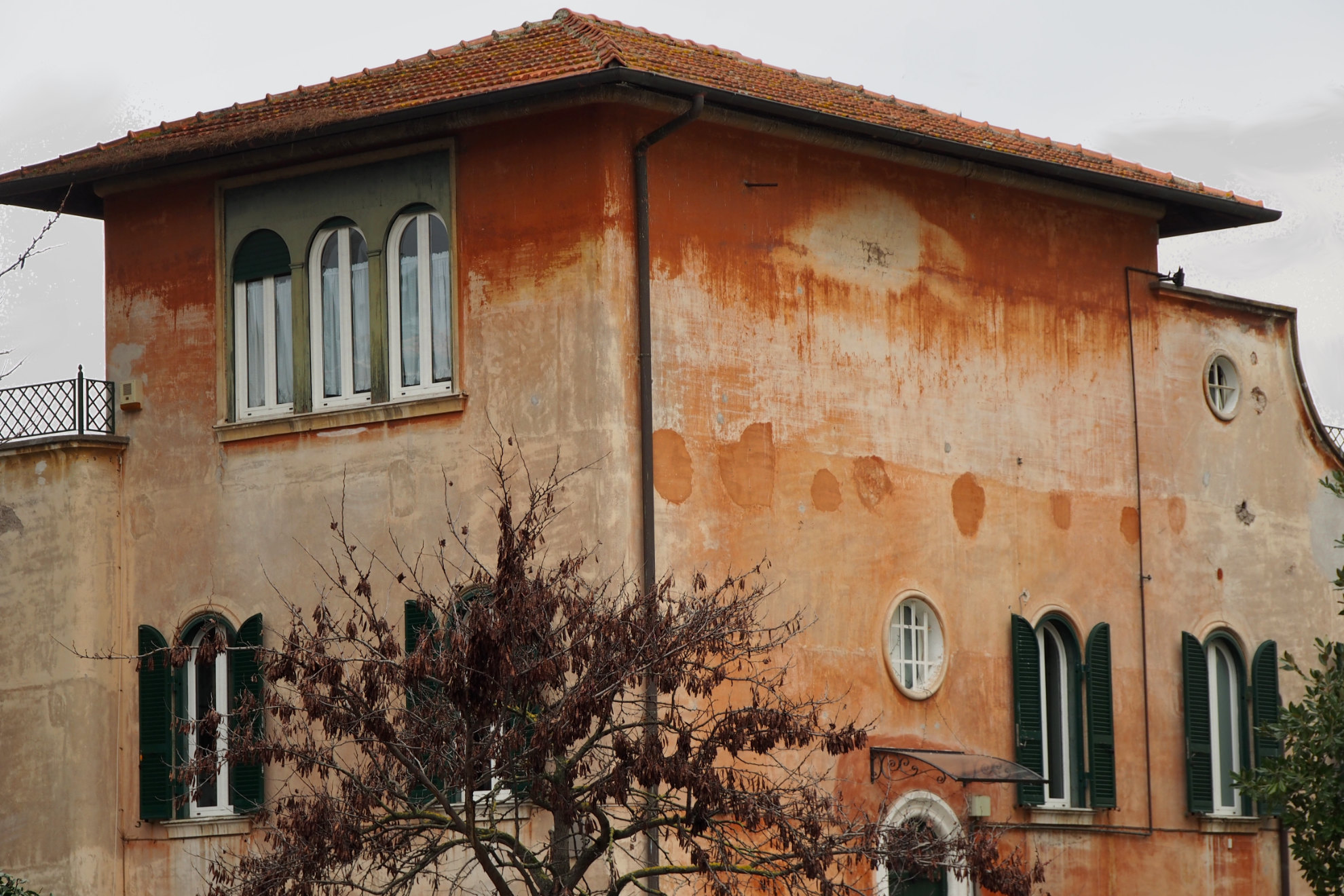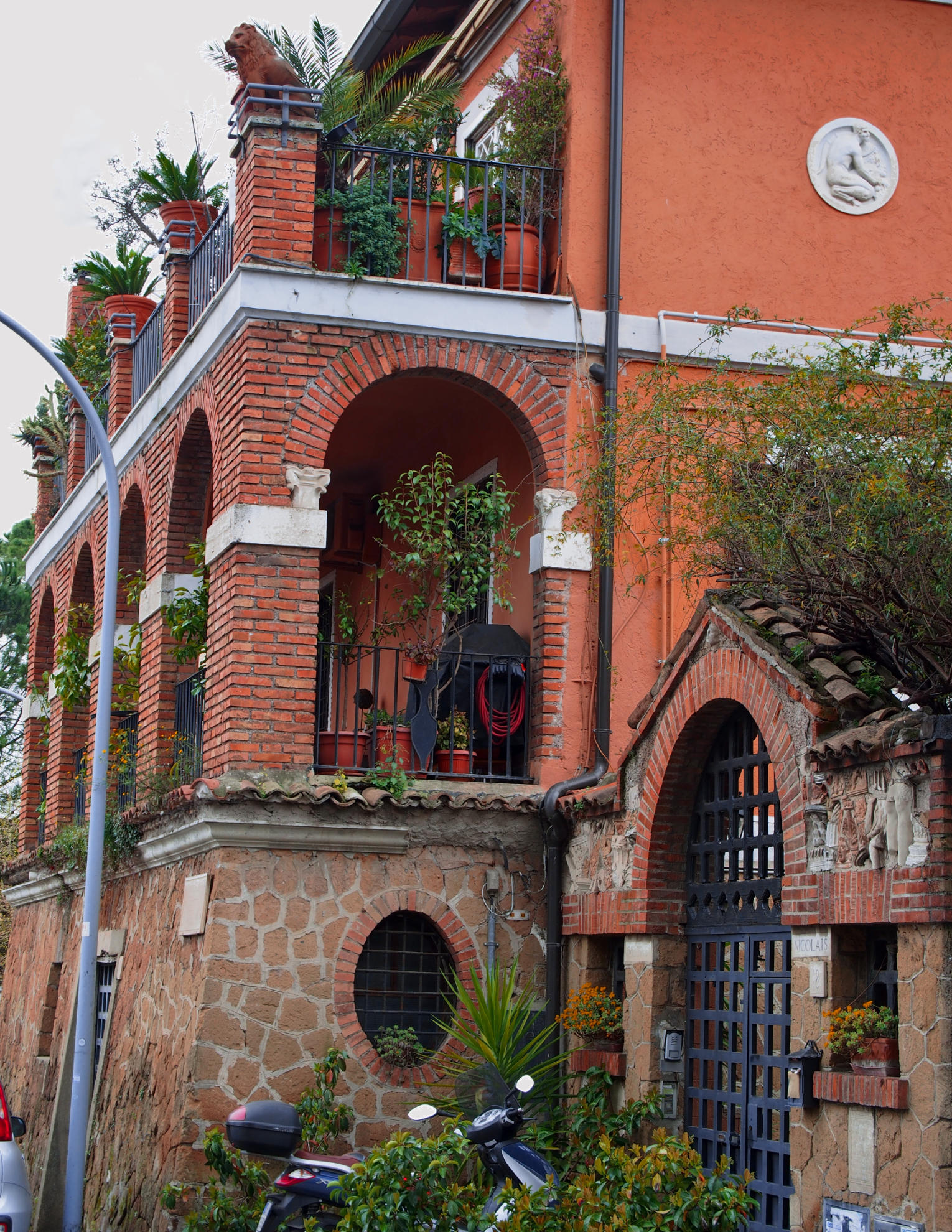In via Passo del Furlo the fountains of the Acqua Sacra (sacred water) flow day and night without stopping, like a natural melody.
Ph. Roberta Venditti

During the day, the coming and going of people arriving to take this very light water that is beneficial for the digestive system, is continuous. A noise similar to the one produced by a wooden bell comes from the very tall cypress tree next to the brick-red villa with arched windows and edged roof.
It would seem like a child playing, but the grace and harmony of the sound betray the great spotted woodpecker, which with its kik kik is one of the most loyal inhabitants of Aniene Garden City. In Piazza Monte Torrone, two parrots stealthily fly among the fruit trees of the private gardens, and our thoughts turn to the augurs that once in Monte Sacro, of which Città Giardino is a part, they made prophecies observing the flight of birds.
Ph. Roberta Venditti

Shortly after the Acqua Sacra, still in Piazza Monte Torrone, the villa-fortress dominates: a dark red brick terrace with large vases, palm trees and lemon trees, with arched vaults and a black mesh gate around which the fantasy indulges in imagining scenes from the life of knights and courtesans.
Going back towards the Sacred Water, you can take Via Catria, a very small street of pink, white, yellow villas that peek out between the ivy and some tall trees.
Ph. Roberta Venditti

The steps of via Catria arrive at via Cimone, with its faded colored villas and cracked walls and its modern four or five-storey buildings, which are the fruit of speculation. From via Cimone you can choose whether to continue to the right, take viale Gottardo and go towards Piazza Sempione, to return to a city dimension, or go left, towards via Monte Nevoso, a historic street of villas that runs alongside the Aniene Nature Reserve.
Ph. Roberta Venditti

Ph. Roberta Venditti

Garden City, this small town within the city, was designed and built by Gustavo Giovannoni in 1919. The idea was to build a neighborhood along the lines of the English garden cities. An autonomous district, with the school, the post office, the town hall, the cinema, the theater, where the middle class, which at the time was represented by public and State Railways employees, could live while enjoying the benefits of the city and the countryside. Services and silence, green spaces with clean air and cultural entertainment, small villas of up to two floors with private gardens and trees.
Ph. Roberta Venditti

Today Città Giardino Aniene somehow resists. To chaos, to concrete, to the infamous traffic of Rome. It defends a slower pace of life and on a human scale. It is faithful to a glorious past, which dates back to 494 BC., when in Monte Sacro the plebeians rose up against the patricians and established the tribunate of the plebs to defend their rights.

